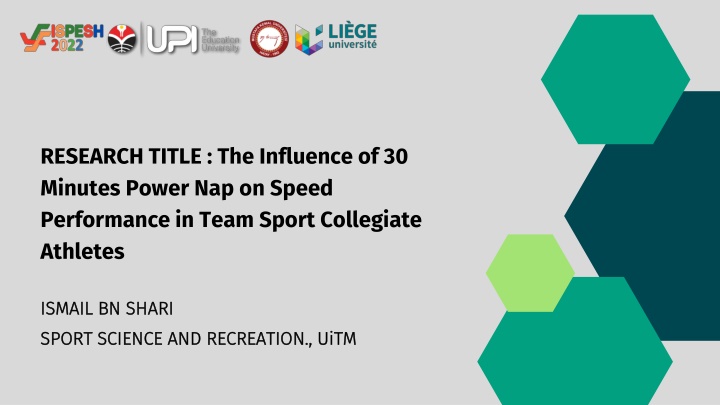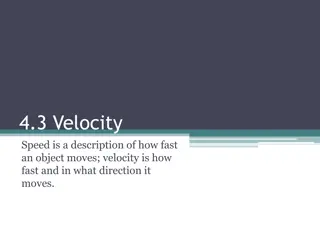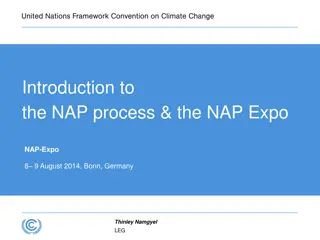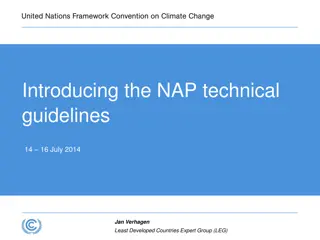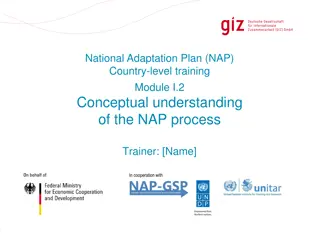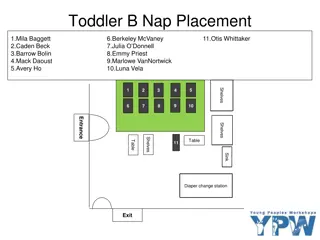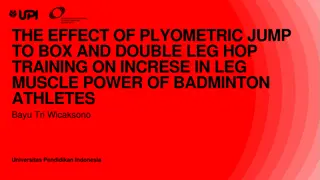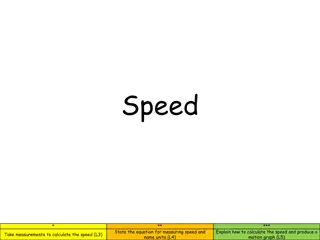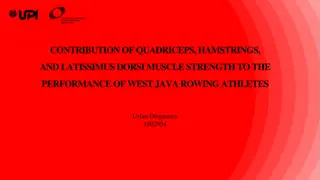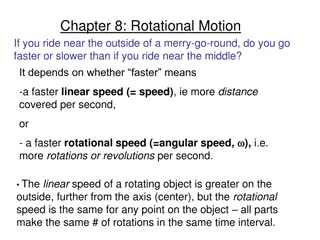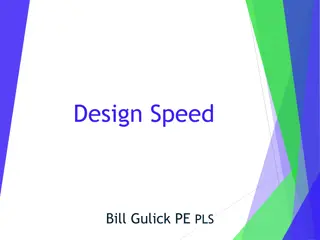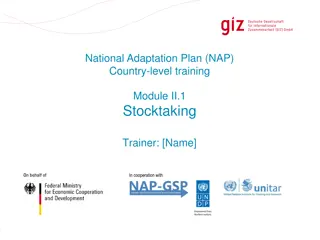Impact of 30-Minute Power Nap on Speed Performance in Collegiate Athletes
Research investigates the influence of a 30-minute power nap on speed performance among collegiate team sport athletes. Results show a significant improvement in speed post-nap, indicating the potential benefits of incorporating power naps for enhancing physical performance. Various studies support the positive impact of napping on athletic performance but emphasize the need for further research to understand individual differences and optimal nap timing.
Download Presentation

Please find below an Image/Link to download the presentation.
The content on the website is provided AS IS for your information and personal use only. It may not be sold, licensed, or shared on other websites without obtaining consent from the author.If you encounter any issues during the download, it is possible that the publisher has removed the file from their server.
You are allowed to download the files provided on this website for personal or commercial use, subject to the condition that they are used lawfully. All files are the property of their respective owners.
The content on the website is provided AS IS for your information and personal use only. It may not be sold, licensed, or shared on other websites without obtaining consent from the author.
E N D
Presentation Transcript
RESEARCH TITLE : The Influence of 30 Minutes Power Nap on Speed Performance in Team Sport Collegiate Athletes ISMAIL BN SHARI ISMAIL BN SHARI SPORT SCIENCE AND RECREATION., UiTM SPORT SCIENCE AND RECREATION., UiTM
INTRODUCTION A power nap is a short period of sleep. Power naps have been shown to have positive effects on physical performance, including improved muscle strength and endurance, reduced muscle fatigue, and improved cardiovascular function (Mah et al., 2011). There is conflicting evidence on the effect of 30 minutes power nap on physical performance. Some studies have shown that 30 minutes power nap can improve performance (Waterhouse et al., 2007), while others have found no such effect (Suppiah et al., 2019). This study aims to determine the effect of a 30-minute power nap on specific physical performance which is speed among team sport collegiate athletes. OBJECTIVES =
METHODS Experimental Design MEASUREMENT 30m Sprint (Hsouna et al., 2020)
RESULT The mean speed of pre power nap was 5.13 (SD=0.22). While mean for post power nap was 5.05 (SD=0.28). Study reported that there is a significant improvement on the speed towards 30 minutes power nap [(pre; mean=5.13, SD=0.22), (post; mean=5.05, SD=0.28)] among the participants (t (24) = 3.12, p < 0.05).
DISCUSSION As a result, it is possible to draw the conclusion that a 30-minute power nap has a noticeable impact on participants' speed. Supported study: Improved sprint performance after a 30-minute nap after lunch when compared to a no-nap condition. (Waterhouse et al., 2007) Taking a nap in the afternoon improved repeated-sprint times. (Hammouda et al., 2018) The shuttle run distance and number of shuttles completed were the specific physical performance metrics that improved with a nap opportunity. (Abdessalem et al., 2019) Nap improving physical performance during the 5m shuttle run test. (Boukhris et al., 2019)
CONCLUSION The purpose of this study analyses the effects of a 30-minute power sleep on collegiate athletes physical performance in team sports in terms of speed. Based on the study, it showed that a 30-minute power nap has a considerable impact on the participants' muscular power and speed. It can be concluded that 30 minutes power nap is one of the ways to enhance physical performance. However, Individual differences and the timing of naps should be considered, and further research is needed to fully understand the impact of napping on athletic performance.
REFERENCES Mah, C. D., Mah, K. E., Kezirian, E. J., & Dement, W. C. (2011). The Effects of Sleep Extension on the Athletic Performance of Collegiate Basketball Players. Sleep, 34(7), 943 950. Waterhouse, J., Atkinson, G., Edwards, B., & Reilly, T. (2007). The role of a short post-lunch nap in improving cognitive, motor, and sprint performance in participants with partial sleep deprivation. Journal of Sports Sciences, 25(14), 1557 1566. Suppiah, H. T., Low, C. Y., Choong, G., & Chia, M. (2019). Effects of a Short Daytime Nap on Shooting and Sprint Performance in High-Level Adolescent Athletes. International Journal of Sports Physiology and Performance, 14(1), 76 82. Hsouna, H., Boukhris, O., Trabelsi, K., Abdessalem, R., Ammar, A., Glenn, J. M., Bott, N., Souissi, N., Lanteri, P., Garbarino, S., Bragazzi, N. L., & Chtourou, H. (2020). A Thirty-Five-Minute Nap Improves Performance and Attention in the 5-m Shuttle Run Test during and outside Ramadan Observance. Sports, 8(7), 98. Hammouda, O., Romdhani, M., Chaabouni, Y., Mahdouani, K., Driss, T., & Souissi, N. (2018). Diurnal napping after partial sleep deprivation affected hematological and biochemical responses during repeated sprint. Biological Rhythm Research, 49(6), 1 13. Abdessalem, R., Boukhris, O., Hsouna, H., Trabelsi, K., Ammar, A., Taheri, M., Irandoust, K., Hill, D. W., & Chtourou, H. (2019). Effect of napping opportunity at different times of day on vigilance and shuttle run performance. Chronobiology International, 36(10), 1334 1342. Boukhris, O., Abdessalem, R., Ammar, A., Hsouna, H., Trabelsi, K., Engel, F. A., Sperlich, B., Hill, D. W., & Chtourou, H. (2019). Nap Opportunity During the Daytime Affects Performance and Perceived Exertion in 5-m Shuttle Run Test. Frontiers in Physiology, 10(JUN).
